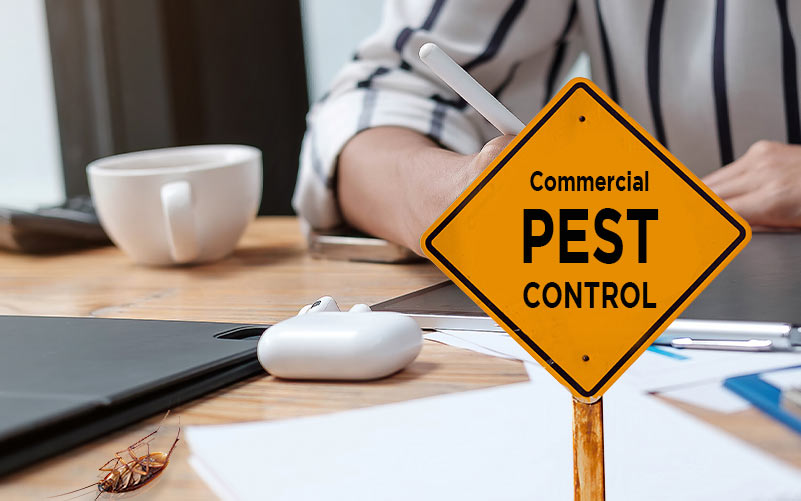A1 Pest Control Charlotte NC Bed Bugs - Expert Elimination Services
Bed Bug Treatment Failure: Contrasting Chemical Vs. Non-Chemical Solutions
In the realm of pest control, particularly when dealing with the consistent issue of bed insects, the selection in between chemical and non-chemical treatment solutions can be a pivotal one. Both techniques provide distinct advantages and disadvantages, influencing elements such as efficiency, security considerations, and overall price. By analyzing the nuanced information of each technique, a more clear understanding of which course to seek in resolving a bed pest problem can be obtained.
Effectiveness of Chemical Therapies
Chemical treatments for bed pest problems have actually been extensively identified for their powerful and rapid efficiency in removing these pests. When thinking about the efficiency of chemical therapies, it is crucial to understand that they can provide a fast and detailed remedy to a bed insect problem. Specialist pest control experts commonly count on pesticides to target bed pests at various phases of their life process, consisting of eggs, grownups, and nymphs. These chemicals usually function by disrupting the bed bugs' nerves, causing paralysis and eventual death.
Additionally, chemical therapies have the benefit of providing residual results, indicating that they can remain to get rid of bed bugs even after the initial application. This recurring activity is especially useful in combating any potential re-infestations. Additionally, the rapid action of chemical therapies can bring alleviation to individuals encountering severe bed pest invasions, permitting them to regain control of their home swiftly.
Safety Interest In Chemical Solutions
One vital facet that requires mindful consideration when utilizing chemical remedies for bed insect therapy is ensuring the safety and security of passengers and the environment. Exposure to particular chemicals utilized in bed bug therapies can lead to respiratory concerns, skin irritation, or various other unfavorable responses, especially in people with pre-existing problems or sensitivities.
In addition, the ecological effect of chemical services is one more considerable factor to consider. Some pesticides utilized in bed bug treatments might be dangerous to advantageous bugs, wildlife, and ecological communities if they leach into the dirt or water systems. It is important to utilize chemical therapies judiciously, complying with security standards, and thinking about less poisonous options to reduce these risks and guarantee the reliable and safe administration of bed pest problems.
Advantages of Non-Chemical Methods
Thinking about the prospective safety and security issues and ecological influence connected with chemical solutions for bed bug treatment, discovering non-chemical strategies offers an encouraging choice with several distinct advantages. Non-chemical approaches supply a more secure choice for families, especially those with pet dogs, youngsters, or people conscious harsh chemicals. These approaches eliminate the threats of exposure to harmful substances, reducing the possibility for negative wellness results. In addition, non-chemical therapies are environmentally pleasant, as they do not add to air or water contamination, making them a sustainable option for pest control.
Furthermore, non-chemical remedies can be effective in targeting bed pests, including hard-to-reach areas where chemical treatments may not permeate - A1 charlotte bed bug exterminator. Methods such as heat treatment, vacuuming, steam cleaning, and bed mattress coverings provide thorough removal without the usage of hazardous chemicals.
Limitations of Non-Chemical Treatments

In addition, non-chemical treatments usually require several applications to attain effective obliteration. This can be lengthy and might not constantly assure complete removal of all bed pests and their eggs, specifically in hard-to-reach or hidden areas.
Additionally, the success of non-chemical treatments greatly counts on correct execution and thoroughness, which can be testing for people without expert experience. Insufficient application of non-chemical techniques may lead to insufficient obliteration, leading to relentless infestations and the need for additional treatments.
For that reason, while non-chemical therapies have their advantages, it is vital to acknowledge these restrictions and consider them when figuring out the most effective technique for look what i found handling bed insect invasions.
Expense Contrast: Chemical Vs. Non-Chemical Options
Offered the constraints related to non-chemical therapies, a necessary element to review in the context of bed pest administration is the expense comparison between chemical and non-chemical alternatives. Chemical treatments normally include the application of pesticides by specialists, which can vary from $250 to $900 per area, relying on the intensity of the invasion and the size of the location to be dealt with. In contrast, non-chemical treatments like heat treatment or steam can be extra costly, with costs ranging from $1,000 to $6,000 for a whole home. While the initial cost of chemical treatments might seem lower, numerous therapies might be required to totally get rid of the infestation, possibly enhancing the general cost. On the other hand, non-chemical choices may give a much more environmentally friendly and lasting solution, although they can be cost-prohibitive for some people. Eventually, when considering the cost of bed pest treatment alternatives, it is necessary to consider the in advance costs against the performance and long-lasting sustainability of the chosen approach.
Final Thought

Taking into consideration the next potential safety concerns and environmental influence connected with chemical remedies for bed insect therapy, checking out non-chemical approaches presents a promising option with numerous distinct advantages.Given the restrictions connected with non-chemical therapies, an important facet to evaluate in the context of bed bug administration is the price contrast in between chemical and non-chemical choices. In contrast, non-chemical treatments like warmth treatment or vapor can be much more costly, with prices varying from $1,000 to $6,000 for an entire home. While the preliminary price of look here chemical treatments may appear reduced, multiple treatments may be called for to fully eradicate the problem, potentially boosting the general cost.In final thought, when contrasting chemical and non-chemical bed insect treatment options, it is necessary to think about efficiency, safety and security, advantages, limitations, and price.